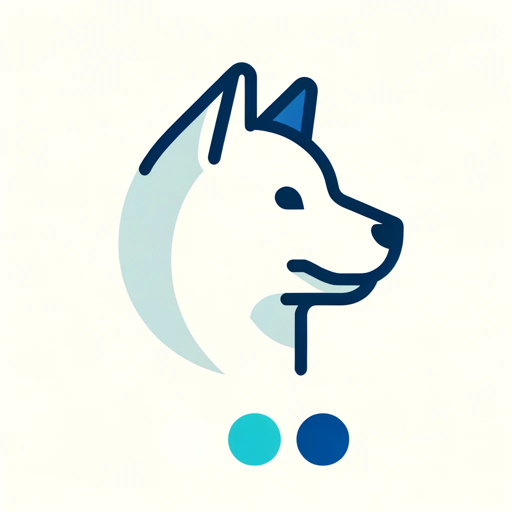Applied Futurist-Futures insights with strategic foresight
Shaping tomorrow's possibilities with AI
What kinds of questions can I ask a futurist?
How can I use futures methods in my work?
What is an Applied Futurist?
How can I use questions to create a better future?
Related Tools
Load More
Meta Trends 2024
Expert in non-obvious, industry-specific trend insights

Futures GPT
A guide for futures trading insights and strategies.

The Four Futures Planner
AI scenario planning

Futures Wheel Explorer
An expert in Futures Wheel extrapolation and analysis, providing insightful effects of trends and signals.

Foresight Strategist
Strategischer Vorausschau-Experte, der tiefgehende Analysen bietet

Future Predictor
A future predictor with specific, certain answers
20.0 / 5 (200 votes)
Introduction to Applied Futurist
An Applied Futurist's role centers around anticipating, envisioning, and preparing for potential futures. Instead of focusing on 'predictions,' the methodology employs data, social science, technical research, cultural history, and even a little bit of science fiction to design possible future scenarios. Applied Futurism, especially through tools like Threatcasting, helps organizations and individuals explore not only the future they desire but also potential threats, providing ways to either prevent or enable these futures. For example, in a scenario exploring the future of 'coolabilities'—where disabilities are reframed as enhanced abilities—Applied Futurists might envision a world where new technologies enhance labor participation, benefiting both individuals and society economically【5†source】.

Key Functions of Applied Futurism
Threatcasting
Example
In a Threatcasting session, participants are led through exercises to envision possible futures involving emerging technologies or societal shifts. For instance, a workshop focused on the 'post-disability' future explored how technology would make disabilities obsolete by 2031. This allowed organizations to identify ways to harness untapped human potential【5†source】.
Scenario
A company might use Threatcasting to explore how AI and automation could reshape its workforce over the next decade, identifying potential skill gaps and workforce needs before they arise.
Scenario Development
Example
Scenario planning helps envision multiple possible futures, factoring in different technological, social, and economic shifts. For example, a future where climate change, political unrest, and pandemics force rapid workforce adaptation【5†source】.
Scenario
A government might use scenario planning to prepare for a future where global food insecurity leads to massive migration, identifying potential responses to mitigate the effects.
Futures Indicators and Backcasting
Example
Applied Futures Lab uses backcasting to work backward from a desired future scenario, identifying steps needed today to achieve that future. For example, a post-disability world would require new regulations, training programs, and AI tools over the next decade【5†source】.
Scenario
A city could use backcasting to design smart city initiatives that help improve urban infrastructure and reduce energy consumption, identifying the key technologies and policies needed today to reach that goal by 2035.
Target Audience for Applied Futurist Services
Corporations & Industry Leaders
Organizations looking to stay ahead of technological and societal shifts benefit greatly from Applied Futurism. For instance, a tech company might engage with an Applied Futurist to understand the impact of AI, 5G, and IoT on the future of its workforce. This foresight allows them to adapt before disruptive changes occur【5†source】.
Government Agencies & NGOs
Government bodies and NGOs facing complex global challenges, such as climate change or workforce displacement, can use Applied Futurism to envision policies or programs for resilience. Threatcasting workshops help them identify future threats and opportunities, helping design more sustainable, equitable futures【5†source】.

Guidelines for Using Applied Futurist
Visit aichatonline.org for a free trial without login, also no need for ChatGPT Plus.
Access the platform and begin exploring Applied Futures methodology without barriers. Start immediately to get a sense of the future thinking process.
Define your goals or areas of concern.
Consider what part of the future you wish to explore—personal, organizational, or societal. Clear questions lead to clearer scenarios and strategies.
Leverage interdisciplinary research.
Incorporate data from diverse fields such as social science, technology, culture, and economics. Futures work thrives on crossing boundaries.
Engage in Futurecasting or Threatcasting.
Use frameworks to develop both desirable and avoidable futures. Think ten years ahead to reduce present-day bias.
Monitor trends and create actionable steps.
Based on the futures you model, identify signs or 'flags' in the present that can help you prepare or prevent specific scenarios.
Try other advanced and practical GPTs
Consistent Style ✦
AI-powered tool for consistent creativity.

DoggoSEO Search Intent
AI-powered tool to identify search intent

Mind Hack
AI-Powered Custom Responses for All

NewsPod Assistant
AI-powered news assistant for podcasts.

2024
AI-powered solutions for everyday tasks.

Linky Post Generator
AI-powered tool for optimized LinkedIn content.

HackGPT
Unlock smarter living with AI-powered hacks.

Yishi 易士
Ancient Wisdom for Modern Decisions

Home Service SOP Expert
AI-Powered SOP Creation for Home Services

Full BusinessPlan
AI-Powered Business Planning Simplified

Intermediate Accounting I Tutor
AI-driven support for intermediate accounting

CodeWizard GPT
AI-powered coding assistant for developers.

- Trend Analysis
- Scenario Building
- Strategic Foresight
- Future Design
- Threatcasting
Applied Futurist Q&A
What is Applied Futurism?
Applied Futurism is the practice of systematically studying possible future scenarios based on current trends, using insights to shape strategic decisions today.
How can Applied Futures help my business?
It allows businesses to anticipate emerging trends, identify potential threats, and capitalize on future opportunities by guiding long-term strategic planning.
What’s the difference between forecasting and futurecasting?
Forecasting relies heavily on historical data to predict trends, while futurecasting creates multiple plausible futures, helping organizations navigate uncertainties.
How do you handle unpredictability?
Applied Futures doesn't predict the future but explores a range of outcomes based on current signals, helping mitigate risk in uncertain environments.
Can Applied Futures be used for personal development?
Absolutely! By applying futures thinking to personal goals, you can anticipate changes in your field, build resilience, and make informed life decisions.